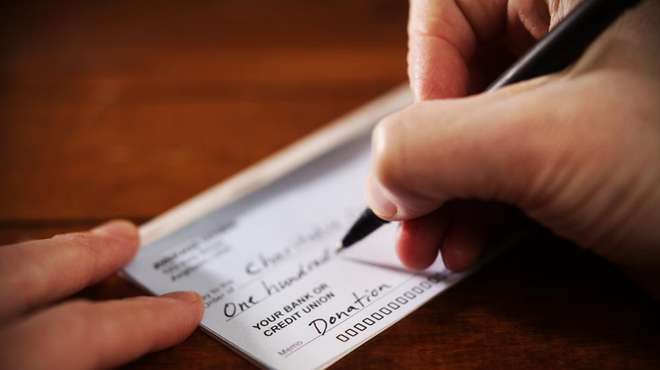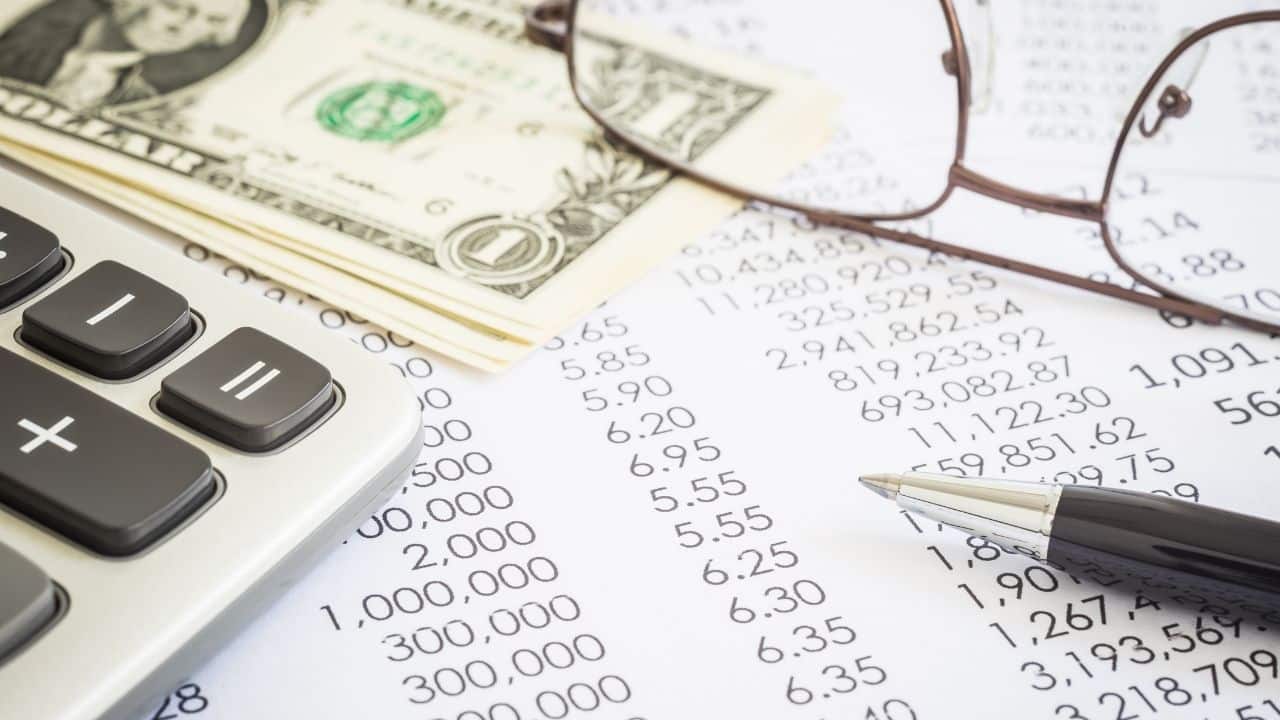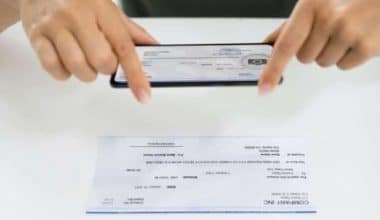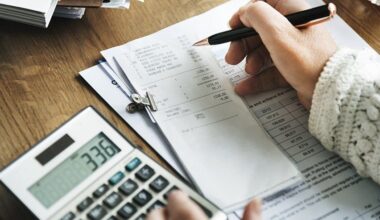No matter how digitalized our world is, checks are still very much in use and valid. A check is another tool for transferring money, and this guide will answer the obvious question: how do you write a check? We will also go over other related questions like how to write a big check to yourself and check out with cents.
How do you write a check Out?
It’s not difficult to write a check, but there are a few considerations to make sure the check is genuine. Here’s a step-by-step guide on how to write out a check.
#1. Date
Using today’s date as a starting point, enter the date of the check-in in the top right corner. With the use of this information, the individual who receives the check will be able to tell when they did the writing.
#2. Payee
To make a payment to a specific individual, business, or organization, fill out the “Pay to the Order of” section with their name. If you’re unaware of their actual name, check out who or what the organization is.
#3. Calculate the amount to confirm
The check’s right-hand side has a box where you can write the check’s amount. Keep the amount as near to the left-hand boundary as feasible so that someone cannot attempt fraud by adding more numbers to the left of it.
#4. Check out the amount
The check amount should be written out in full below the “Pay to the Order of” line. It’s critical to write down the exact amount since, in the event of a discrepancy, the words take precedence over the numbers.
#5. Memo
It’s excellent etiquette to add notes in the event you have to trace a transaction afterward, even if you don’t use the memo section. You may want to provide your account number or Social Security number in this box when paying taxes, utility bills, or vendors.
#6. Signature
Pay the invoice with a check. The area on the bottom right side of the check is where you’ll write this. The signature on the check must match the one on the account. By signing your name, you certify that you will make the payment to the payee in the amount specified.
Three Factors in Check Writing
You’ll need to know these three numbers in order to succeed in writing a check. You must be able to recognize the portions of a check before you can begin writing and using paper checks. Three numbers are critical, and they appear in the same places on every printed check.
#1. The bank’s routing number
The routing number is a unique identifier for each bank. There are always nine digits in this number. Any online banking operations will necessitate the knowledge of this number.
#2. The account’s number
This is the number associated with your personal checking account.
#3. Check number
Check numbers appear in the upper right corner of each paper check as well as following the account number.
Things to consider: How to write out a check
Although they may appear obsolete in today’s digital world, checks are nevertheless used as a payment method on occasion. Make sure your checks go where they’re supposed to by following the advice below.
#1. Keeping a Log of Your Purchases
If you write checks, keep track of them using a check register, spreadsheet, or other tracking systems. Whatever method you use to keep track of your checks, make sure you keep note of the following details: The check number and the date on which the check was drawn; the person who receives the payment, describe the transaction in a few words. The amount of money that will be paid. In order to avoid bouncing a check, it is important to keep a complete record of all of your checks.
#2. Balance Your Bank Statements
Checkbook balances or reconciliation can help you keep track of all of your monthly transactions. You can gain a clearer view of your financial condition can by keeping track of all your transactions.
#3. When writing a check, be cautious
Your checks may be vulnerable to fraud if you don’t take the necessary safeguards. When writing checks, be sure to follow these safety precautions:
- Use a pen to write checks to ensure that deleting the information will not be possible.
- Don’t write a check that isn’t paid.
- Make sure to include the payee and the amount before signing a check.
- A check made out to a cashier’s check is not a good idea.
- The amount of your check should not be left blank so that someone else can add to it.
How Do You Write a Check to Yourself?
You can write yourself a check, which is an easy option that you might have right now (without having to open new accounts or cope with a username and password). If you prefer, you can either deposit the check into a different account or cash it in. Here is how to write a check to yourself.
Formally, you fill out the check by writing your name on the line that reads “Pay to the order of,” and then mail it in (or similar). To avoid issues, you can consider making the check payable to “Cash,” but that’s dangerous because anyone can cash or deposit a check made out to “Cash.” Specify the amount of money you’d like to get.
For instance, if you’re swapping banks or attaching funds to an online bank account, you can write a check and transfer the money into your new account. Even so, keep in mind that there may be simpler and more rapid ways to transfer funds digitally.
Deposit
By signing and adding “For deposit only,” you’ll be able to make a deposit. Deposits can be made in a variety of ways:
- Using your bank’s app, you can take a picture of the check.
- When the check is deposited at an ATM,
- By going to your bank and handing over the check yourself (or mailing it in)
The same rules apply if you’re only trying to transfer money from one bank to another. However, there are other possible means to do that like through phone calls or online.
Cash the Check
Sign the check when you’re ready to deposit it at a bank or credit union to get the funds. In order to do so, sign the reverse of the card and show the teller your ID. You may also need to include your bank account number next to your name in order to complete the process. If you can’t cash the check at your own bank, alternative options include check-cashing establishments, supermarkets, and other banks. The only way to get the full amount of your check-in cash is to cash it on the go at the same bank.
How Do You Write a Check With Cents?
How to write cents on a check is not as complicated as it appears. Firstly, the phrase “and” will be used to add cents as you write your check. As you write the check, add the fractional cent amount after the dollar amount. The cents amount on the check can be viewed as a percentage for this. You could, for instance, write 32/100 as 32 cents. You’ll see that we’ve gone back to utilizing decimal notation instead of writing the amount out in its entirety.
When it comes to writing a check, there is only one remaining obstacle. Because of a big error in one of the fields, you may need to invalidate your check so that no one attempts to deposit it in the wrong bank account. Once the check is void by writing the word “VOID” across all of the fields, write it again in a place where you can plainly see it.
Do Checks Have To Be In Cursive?
Cursive writing on checks is not required, but it is crucial that they are readable. On the “date” line, enter the current date. Write the complete name of the cheque recipient or the organization’s full name next to “Pay to the Order of.”
Should I Put My Full Name on My Checks?
The check’s upper left corner should clearly include your name and address. Having your name and address pre-printed on your checks makes life simpler. If you know you’ll be moving, you can forego pre-printing your address and ask the check firm to simply write your name on the check if you’re the only person listed on the account.
Can Someone Access Your Bank Account With a Check?
A carelessly discarded physical check can compromise your bank account even though someone cannot access your account directly using just your bank’s routing information. Personal checks contain both your routing and account numbers.
What Is the Crucial Component of a Check?
The crucial component of a check is the Signature.
Your check’s signature area is the last to be completed. The check cannot be cashed if you don’t sign it, thus this field is crucial. In fact, because it causes them additional trouble, most banks will charge you a fee if you write an invalid check.
What Is the Safest Form of Check?
The safest form of check is the cashier’s check.
Certified checks and cashier’s checks are examples of formal checks that are backed by a bank. Cashier checks and certified checks are typically thought of as being more secure and less prone to fraud than personal checks. However, it’s crucial to watch out for fraud.
Should I Write My Account Number on the Back of a Check?
If it’s accessible, you can cash it, deposit it online, or deposit it into your account by bringing it to your neighborhood bank. When you go to the site where the check can be cashed, bring identification or a bank card. If you intend to deposit the check straight into an account, write the account number on the back of the check.
Can a Check Contain Errors?
It’s usually best to simply void the check and begin a new one if you accidentally wrote the wrong amount on the check. If this is not an option or your error can be corrected, make a clean line through it and type the fix just above it. To help make your correction official, initial it.
Conclusion
Although they may appear obsolete in today’s digital world, checks are nevertheless used as a payment method on occasion. Make sure your checks go where they’re supposed to go as you follow through with this guide.
How do you write a check FAQs
How do you write a check amount in words?
Only the exact monetary amount in words is what you need to write on a check. Use a fraction for servings that are less than one dollar.
How do you write a check out for $1500?
Writing a check for 1,500: In the Dollar box you would write, “1,500.00” and in the Dollar line you would write, “one thousand, five hundred and 0/100.






